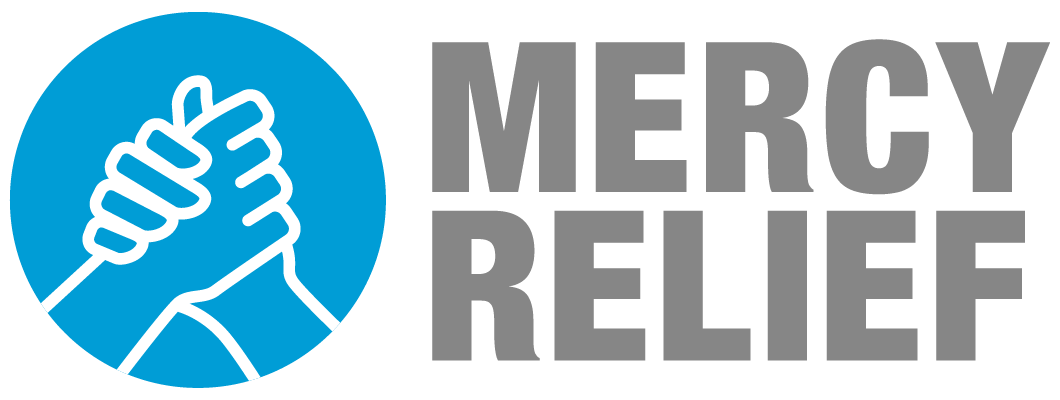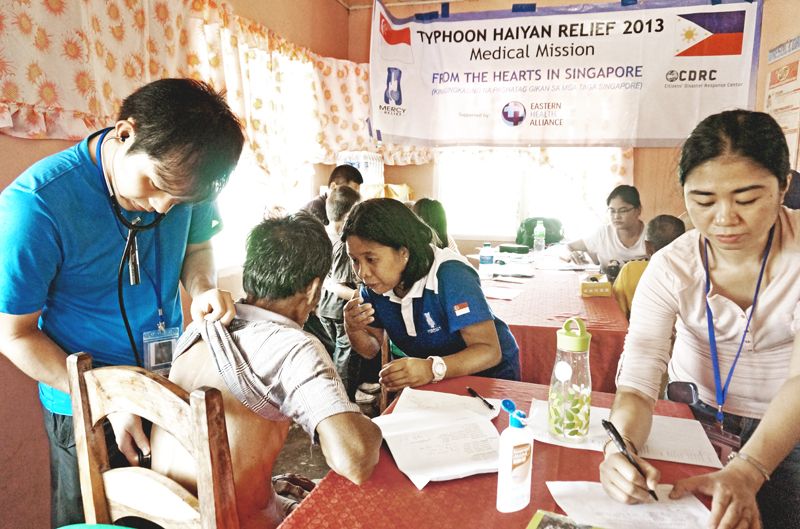Date: 8 November 2013
Category: 5 (Severe Tropical Cyclone)
Super Typhoon Haiyan, which ravaged the Visayas Region on 8 November 2013, was one of the world’s strongest storms to make landfall, and caused the biggest humanitarian crisis in the country’s history. It left at least 10,000 people dead and caused upheaval to 14 million people, of which 5.4 million were children. Up to 80 per cent of the buildings and homes in its path were destroyed, displacing four million people. Mercy Relief’s response team, already on the ground following the Bohol earthquake, were able to respond immediately with emergency aid.
Partner(s): Rahmatan Lil ‘Alamin Foundation (RLAF), Citizen Disaster Response Center (CDRC), Leyte Centre for Development (LCDE), Panay Centre for Disaster Response, Inc (PCDR), Centre for People’s Resources and Services, Inc (CPRS), Eastern Health Alliance, SAP Asia, Chen Su Lan Trust Foundation, ABN AMRO, KPMG, RBS, ACS Barker, St Andrew Junior College, Victoria Junior College, Club SNAP, Learnathon 2013, Blu Jaz Café, Wing Tai Asia, KOI Café, Fish & Co., SingHealth, Southern Tagalog People’s Response Center (STPRC), Sentro para sa lauunlad ng Katutubong Agham at Teknolohiya, Inc (SIKAT), University of Philippines – School of Health Sciences (UP-SHS)
How we helped:
- Collected donations amounting to $1,501,686
- Sent a nine-man medical team who ran mobile clinics for 1,800 patients
- Deployed seven relief teams to provide relief to 79,490 beneficiaries, including:
- 13,554 family food packs
- 600 shelter/livelihood kits
- Six PedalPure water filtration systems
- Completed seven typhoon recovery (rehabilitation and reconstruction) projects valued at $422,900 and benefitting 9,437 beneficiaries
- Artificial Reef Installation for Coastal Rehabilitation at Manicani Island, Eastern Samar:
- A marine area measuring two hectares was rehabilitated with 140 artificial reef balls. This will help restore the natural marine habitat and aid livelihood recovery once the fishing population is regenerated
- Four fishing aggregating devices were manually installed
- 12 paddle boats were constructed and, together with 60 units of hand lines, spear guns and goggles, were all distributed
- Valued at $61,400, and benefitted 1,900
- Camansi Elementary School Repair Project at Carigara, Leyte Province:
- Repaired a school building to facilitate a back-to-school programme
- Valued at $10,000, and benefited 304 school children
- Reconstruction of University of Philippines – School of Health Sciences (UP-SHS), which was destroyed by the typhoon. UP-SHS takes in 250 medical undergraduates annually who are trained to serve in the country’s rural areas
- Mercy Relief provided a pre-fabricated modular building which will be used as a skills lab
- Valued at $97,600
- Temporary Learning Classrooms (TLC) at Carigara, Leyte Province:
- Five deployment tents were provided as TLCs for four schools to facilitate their back-to-school programmes
- Conducted psycho-social rehabilitation programmes for the students
- Valued at $67,600, and benefited 3,450 students
- Livelihood Recovery & Community Resilience at E.B Magalona, Negros Occidental:
- Nine motorized fishing boats were constructed and distributed to four small fishery associations along with fishing gear
- Rehabilitated an oyster farm
- Formed disaster preparedness committees and conducted disaster preparedness training
- Valued at $89,100, and benefited 726 people
- Livelihood Recovery & Community Resilience at Estancia, Panay Island:
- Eight pump boats and one deep-sea fishing boat were constructed and distributed
- Formed disaster preparedness committees and conducted disaster preparedness training
- Valued at $48,200, and benefited 725 people
- Livelihood Recovery & Community Resilience at Coron, Palawan Province:
- 22 fishing nets, 50 sets of hooks and lines, and 75 seaweed seedlings were distributed
- Six sewing machines were distributed and micro-businesses developed
- Formed disaster preparedness committees and conducted disaster preparedness training
- Valued at $50,600, and benefited 2,082 people
- As of 2016, there are two projects ongoing to promote sustainable livelihood and food security


